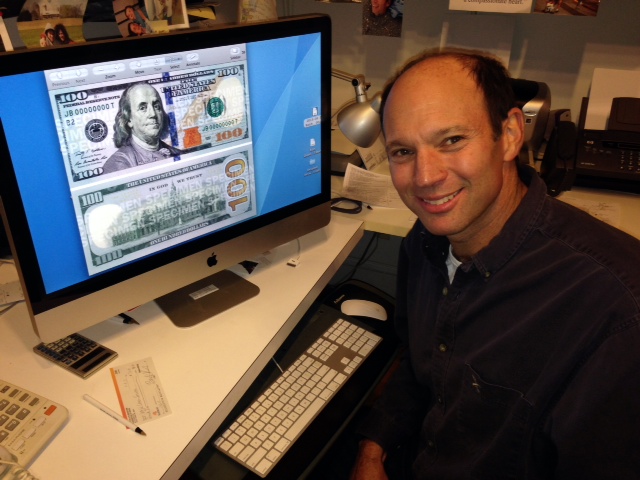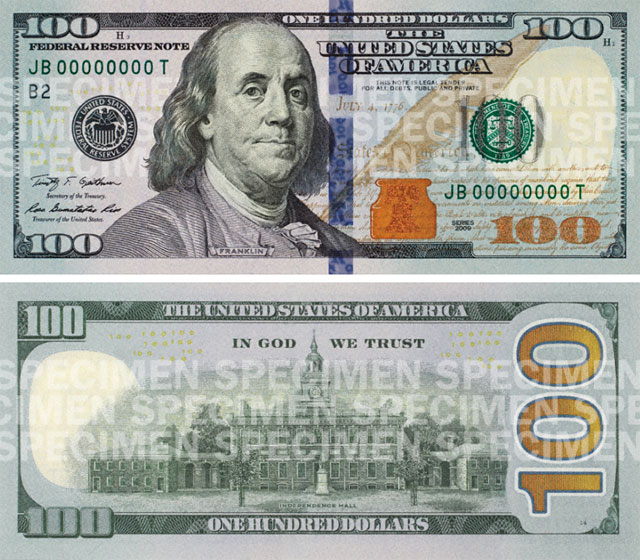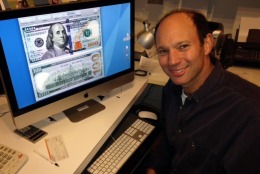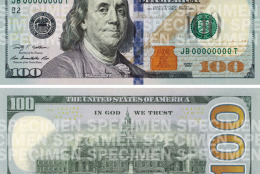



CHEVY CHASE, Md. – He was in a position where few Americans ever find themselves — on a team tasked with designing the new $100 bill.
But Chevy Chase artist and scientist Barton Rubenstein couldn’t have imagined all of the considerations that went into creating the note.
The National Academies asked Rubenstein to join the committee because of his expertise in the study of perception. In his former career as a scientist, Rubenstein studied recognition, which is essentially how people see things.
Other scientists in the group have backgrounds in holograms, intricate printing reproduction and paper texture.
“The main thing with this bill is, they wanted to find new features that were cutting edge, technologically speaking, that could beat out the counterfeiters,” Rubenstein says.
The committee met with officials from other countries, such as the United Kingdom, Canada and Australia, to discuss what worked and what caused problems in their currency designs.
After these meetings and traveling around the country for input, the committee decided to avoid major changes to the color and size of the U.S. bill.
That said, there is a color barcode that each note likely will have, Rubenstein says, to help reduce the instances of bill washing.
“One of the problems with counterfeiting is people take the $1 bill and are able to somehow wash it of its ink and reprint it as a $100 bill,” Rubenstein says.
The barcode, which is placed in a different section on the $100 note than it is on any other note, is specially enhanced with holograms to lessen its reproduction.
“The new design incorporates security features that make it easier to authenticate, but harder to replicate,” Federal Reserve Board Gov. Jerome H. Powell says in a statement.
“As the new note transitions into daily transactions, the user-friendly security features will allow the public to more easily verify its authenticity,” Powell says.
User-friendly features, like a watermark, allow the public to visually authenticate the redesigned bill.
Each of the new $100 bills costs 14 cents to make, which is more expensive than the last iteration, Rubenstein says. Keeping printing limitations and budgets in mind was part of the design process, he says.
The bill’s designers also had to consider those with disabilities who use it.
But after learning that incorporating Braille into the bill’s design would be too difficult, the committee agreed that printing a single large number on the bill would fit the need of the visually impaired. It was one of Rubenstein’s major contributions to the design.
“I just felt like I had a strong voice in making that happen and everyone else quickly said, ‘Yeah, we’ve got to do this,'” Rubenstein says.
The newly designed note is expected to be in circulation for at least a decade.
Follow @WTOP on Twitter.







